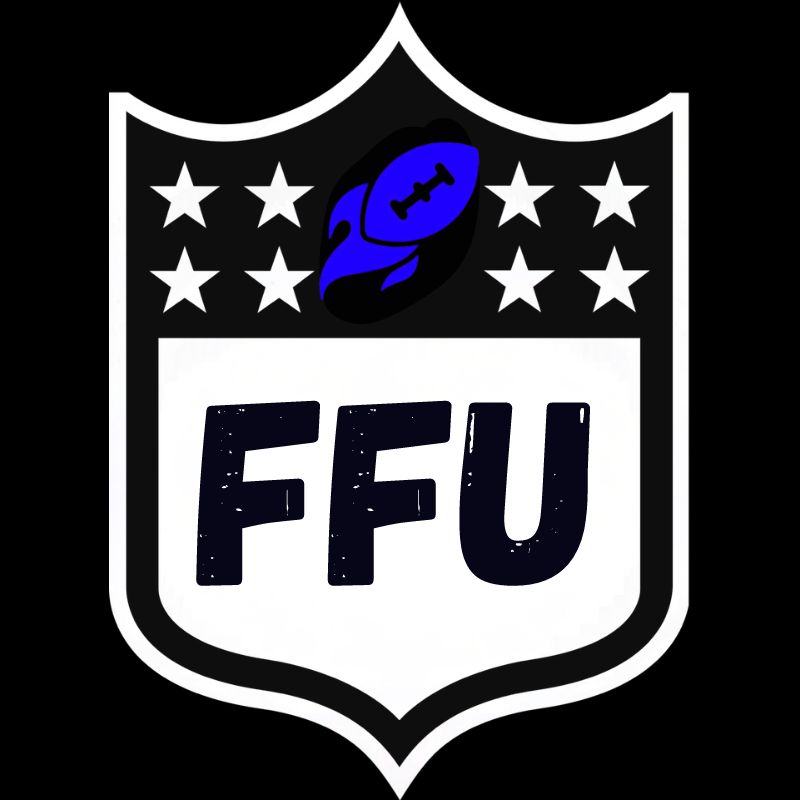For the general public, a standard fantasy football league suffices. If you’re reading this article, you may have grown weary of normal leagues and would like to try something new. Crash Course, a Fantasy Football Universe series, delves into unique formats. So, let’s start with “Off with their Heads: Mastering Guillotine Leagues”.

How Does it Work?
Guillotine leagues are equivalent to the WWE’s Royal Rumble. Lots of managers in the mix all trying to avoid being eliminated in hopes of scoring a last-minute victory. Most Guillotine Leagues start with 18 managers and eliminate one team weekly until only a champion remains. It is your traditional fantasy football league, except with extreme elimination rules. You still draft a team, and you face a head-to-head match each week all season long, but that’s where the similarities end.
How is it different?
As I stated above, the league starts with a draft and you still face an opponent every week, but that’s where it goes completely off the rails. While it’s true that you do face a different opponent every week, this matchup means absolutely nothing. The only thing that matters each week is that you are not the lowest-scoring team that week, because if you are you are eliminated and all your players are dropped on waivers.
At the end of the year, you could have a losing record, but it means nothing. Winning each week means nothing, all that matters is that you survive. The key in this format is the same as Royal Rumble. You can’t win it at the beginning, all you can do is stay alive long enough to be the last team standing.
How does the Draft work?
The startup draft can be done in two ways:
- Snake Draft: this is the most typical way to do a Guillotine League. It’s simple and effective and with 18 teams in most leagues, this is the best way to go.
- Auction Draft: auction leagues can be an interesting way to do a Guillotine League but with 18 teams in most leagues, an auction can be a total nightmare and can be an incredibly long process
A look at the Rosters
The rosters tend to be minimal as the sheer volume of teams makes it difficult to have deep starting rosters and benches. The 2024 FFU Guillotine League featured 10 starting positions and three bench slots. The starting positions were QB, RB, RB, WR, WR, TE, FX, FX, PK, and DST.
By the end of the draft, the options left on the board were less than desirable. It was tough to fill out 13 rounds and it would be pointless to go any deeper.
Many leagues do not have benches and are best ball format, so it can be even more critical to draft well. In this case, we allowed three bench slots and a handful of injured reserved slots to give managers a fighting chance.
How does the Waiver Wire work?
The waiver wire, in the beginning, is as you would expect in an 18-team league, it’s virtually non-existent. Sure, there is bound to be the occasional rookie or injury replacement who provides value but it’s rare.
Where the waiver wire truly becomes a factor is when a team is eliminated. Each week, a team will be eliminated, and while they were the lowest-scoring team that week, they can often have multiple players with excellent value.
The trick here is to balance between spending your FAAB early or holding onto the money in hopes of scoring the high-end players you want. Some high-end players such as Justin Jefferson and Christian McCaffrey could conceivably be available in the early weeks of the season and those players will typically be won by managers willing to drop their entire FAAB on one player.
Other managers prefer to spread out their FAAB and instead find players who are a tier lower but who are great values. In this format, the biggest decision you will face is, who to spend your FAAB on and when?
How the scoring works
Again, the scoring is traditional with the expectation that the head-to-head matchup doesn’t matter. If you beat your opponent, that’s great. It means you aren’t the lowest-scoring team that week and will live to fight another day. Aside from that, your weekly victory means nothing.
Focus less on being the best team each week and just try not to be the worst.
The Consensus Strategy
- Avoid Players with Early Bye Weeks: This is probably the most common tactic. While it’s true that many great players will be available on the waiver wire, they won’t do you any good if it’s your players who are dropped when you are eliminated. All players have a bye week, but the options to cover a quarterback with a Week 4 bye are going to be significantly more expensive and less productive than they will with a Week 14 quarterback bye week.
- Avoid Bye Weeks that Conflict: If ever there was a format that required you to monitor bye weeks it’s this one. Getting to Week 4 only to realize that three of your four running backs have the same bye week is bad, but when every week is a battle for survival it’s a death sentence. Using your high-end draft capital on players who are all going to be on bye during the same week is a common mistake that leads to the ruin of many teams.
- Avoid Injured Players: Many managers will draft an injured player with the knowledge that they can put that player on IR and stash them for late in the season, but in this format, they should be viewed as a dead pick. The odds of this player being available later in the season when they are healthy are very high. All they did for you was to waste draft capital on a player who will be of little value to you. Use your draft capital on healthy players and worry about picking up injured stars later when they are healthy.
My Strategy
- Avoid Stacking Teammates: It is an immensely popular tactic to stack QB/WR to shoot for high-upside and boom weeks, but when these players have the same bye week as teammates do, it can leave you in a real bind in a quick hurry. This situation is made even worse when you ignore the first strategy. Having Jalen Hurts and AJ Brown as your first two picks can look sexy, but if they have a Week 4 bye, you can be dead in the water before you ever get rolling.
- Focus on Starters: This strategy is somewhat obvious but in this format, it’s doubly true. Worry about filling out your Week 1 starting lineup, you can add depth players and additional starters as more teams get eliminated and players become available. Having a deep, well-balanced roster will do you no good if you don’t have enough starting firepower to survive each week.
- Zig When Others Zag: With 18 teams drafting, many managers will panic after a long positional run. The key here is to avoid panicking. Instead of taking the 20th receiver off the board, simply pivot and take the first quarterback off the board. It’s better to have a high-end quarterback and tight end when you draft at the end of the board instead of piling on and ending up with low-end players at each position.
In Closing
This format is a true master class in strategy. You should be trying to play chess while everyone else is playing checkers. Every single move in this format, from a draft pick to a waiver claim is a calculation and an investment that will use up precious resources.
You have to decide which players are most valuable to you at their cost and go from there. There will be no right answer and no wrong answer, just do whatever you have to do to survive.
Don’t forget to check out the rest of the Crash Course Series. Below is the video for the 2024 FFU Guillotine League Draft, check it out to see the unique strategies employed.

